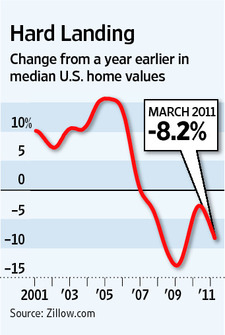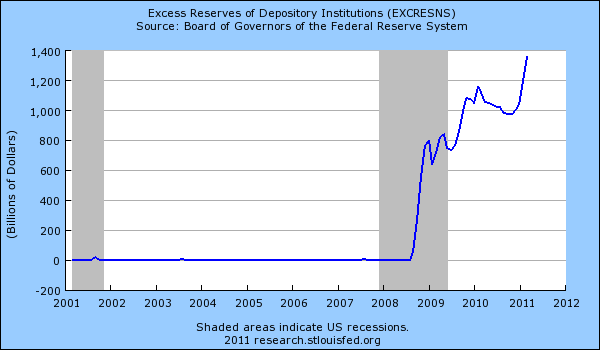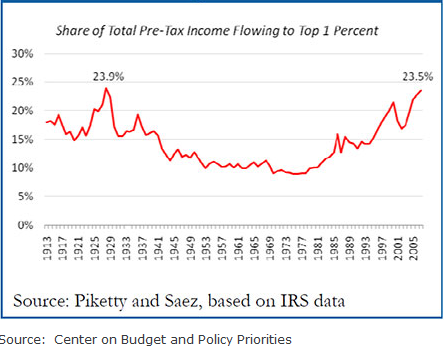Posted By thestatedtruth.com on May 8, 2011
President Obama speaks on the secret operation to take out Bin Laden….President Obama: We know he was there at least five years. The fact of the matter is, you will not see bin Laden walkin’ on this earth again. As nervous as I was about this whole process, the one thing I didn’t lose sleep over was the possibility of taking bin Laden out. Justice was done. And I think that anyone who would question that the perpetrator of mass murder on American soil didn’t deserve what he got needs to have their head examined.
On Wednesday, May 4, 2011 – three days after he announced that American troops had killed Osama bin Laden in Pakistan – President Barack Obama talked with “60 Minutes” correspondent Steve Kroft in the Roosevelt Room of the White House. Below is a transcript of that interview, as well as the full interview.
STEVE KROFT: Mr. President, was this the most satisfying week of your Presidency?
PRESIDENT BARACK OBAMA: Well, it was certainly one of the most satisfying weeks not only for my Presidency, but I think for the United States since I’ve been President. Obviously bin Laden had been not only a symbol of terrorism, but a mass murderer who’s had eluded justice for so long, and so many families who have been affected I think had given up hope.
And for us to be able to definitively say, “We got the man who caused thousands of deaths here in the United States and who had been the rallying point for a violent extremist jihad around the world” was something that I think all of us were profoundly grateful to be a part of.
KROFT: Was the decision to launch this attack the most difficult decision that you’ve made as Commander-In-Chief?
PRESIDENT OBAMA: Certainly one. You know, every time I send young men and women into a war theatre, that’s a tough decision. And, you know, whenever you go to Walter Reed [Army Medical Center] or Bethesda [Naval Hospital] and you see the price that our young people pay to keep this country safe, that’s a tough decision. Whenever you write a letter to a family who’s lost a loved one. It’s sobering.
This was a very difficult decision, in part because the evidence that we had was not absolutely conclusive. This was circumstantial evidence that he was gonna be there. Obviously it entailed enormous risk to the guys that I sent in there. But ultimately I had so much confidence in the capacity of our guys to carry out the mission that I felt that the risks were outweighed by the potential benefit of us finally getting our man.
KROFT: When the CIA first brought this information to you . . .
PRESIDENT OBAMA: Right.
KROFT: What was your reaction? Was there a sense of excitement? Did this look promising from the very beginning?
PRESIDENT OBAMA: It did look promising from the beginning. Keep in mind that obviously when I was still campaigning for President, I had said that if I ever get a shot at bin Laden we’re gonna take it. And that was subject to some criticism at the time, because I had said if it’s in Pakistan and, you know, we don’t have the ability to capture ’em in any other way, then we’re gonna go ahead and take the shot. So I felt very strongly that there was a strategic imperative for us to go after him.
Shortly after I got into office, I brought [CIA director] Leon Panetta privately into the Oval Office and I said to him, “We need to redouble our efforts in hunting bin Laden down. And I want us to start putting more resources, more focus, and more urgency into that mission.”
Leon took that to the CIA. They had been working steadily on this since 2001, obviously. And there were a range of threads that were out there that hadn’t quite been pulled all together. They did an incredible job during the course of a year and a half to pull on a number of these threads until we were able to identify a courier who was known to be a bin Laden associate, to be able to track them to this compound.
So by the time they came to me they had worked up an image of the compound, where it was and the factors that led them to conclude that this was the best evidence that we had regarding bin Laden’s whereabouts since Tora Bora.
But we didn’t have a photograph of bin Laden in that building. There was no direct evidence of his presence. And so the CIA continued to build the case meticulously over the course of several months. What I told them when they first came to me with this evidence was: “Even as you guys are building a stronger intelligence case, let’s also start building an action plan to figure out if in fact we make a decision that this is him or we’ve got a good chance that we’ve got him, how are we gonna deal with him? How can we get at that?”
And so at that point you probably had unprecedented cooperation between the CIA and our military in starting to shape an action plan that ultimately resulted in success this week.
KROFT: When was that when you set that plan in motion?
PRESIDENT OBAMA: Well, they first came to me in August of last year with evidence of the compound. And they said that they had more work to do on it, but at that point they had enough that they felt that it was appropriate for us to start doing some planning. And so from that point on we started looking at the time what our options might be.
The vigorous planning did not begin until early this year. And obviously over the last two months it’s been very intensive in which not only did an action plan get developed, but our guys actually started practicing being able to execute.
KROFT: How actively were you involved in that process?
PRESIDENT OBAMA: About as active as any project that I’ve been involved with since I’ve been President.
Obviously we have extraordinary guys. Our Special Forces are the best of the best. And so I was not involved in designing the initial plan. But each iteration of that plan they’d bring back to me. Make a full presentation. We would ask questions.
We had multiple meetings in the Situation Room in which we would map out — and we would actually have a model of the compound and discuss how this operation might proceed, and what various options there were because there was more than one way in which we might go about this.
And in some ways sending in choppers and actually puttin’ our guys on the ground entailed some greater risks than some other options. I thought it was important, though, for us to be able to say that we’d definitely got the guy. We thought that it was important for us to be able to exploit potential information that was on the ground in the compound if it did turn out to be him.
We thought that it was important for us not only to protect the lives of our guys, but also to try to minimize collateral damage in the region because this was in a residential neighborhood. I mean one of the ironies of this is, you know, I think the image that bin Laden had tried to promote was that he was an ascetic, living in a cave. This guy was living in a million dollar compound in a residential neighborhood.
KROFT: Were you surprised when they came to you with this compound right in the middle of sort of the military center of Pakistan?
PRESIDENT OBAMA: Well, I think that there had been discussions that this guy might be hiding in plain sight. And we knew that some al Qaeda operatives, high level targets basically, just blended into the crowd like this.
I think we where surprised when we learned that this compound had been there for five or six years, and that it was in an area in which you would think that potentially he would attract some attention. So yes, the answer is that we were surprised that he could maintain a compound like that for that long without there being a tip off.
KROFT: Do you believe it was built for him?
PRESIDENT OBAMA: We are still investigating that, but what is clear is that the elements of the compound were structured so that nobody could see in. There were no sight lines that would enable somebody walking by or somebody in an adjoining building to see him. So it was clearly designed to make sure that bin Laden was protected from public view.
KROFT: Do you have any idea how long he was there?
PRESIDENT OBAMA: We know he was there at least five years.
KROFT: Five years?
PRESIDENT OBAMA: Yeah.
KROFT: Did he move out of that compound?
PRESIDENT OBAMA: That we don’t know yet. But we know that for five to six years this compound was there, and our belief is that he was there during that time.
KROFT: What was the most difficult part? I mean you had to decide. This was your decision — whether to proceed or not and how to proceed. What was the most difficult part of that decision?
PRESIDENT OBAMA: The most difficult part is always the fact that you’re sending guys into harm’s way. And there are a lot of things that could go wrong. I mean there’re a lot of moving parts here. So my biggest concern was, if I’m sending those guys in and Murphy’s Law applies and somethin’ happens, can we still get our guys out? So that’s point number one.
Point number two, these guys are goin’ in in, you know, the darkest of night. And they don’t know what they’re gonna find there. They don’t know if the building is rigged. They don’t know if, you know, there are explosives that are triggered by a particular door opening. So huge risks that these guys are taking.
And so my number one concern was: if I send them in, can I get them out? And a lot of the discussion we had during the course of planning was how do we make sure there’s backup? How do we make sure that there’s redundancy built into the plan so that we have the best chance of getting our guys out? That’s point number one.
Point number two was: as outstanding a job as our intelligence teams did — and I cannot praise them enough they did an extraordinary job with just the slenderest of bits of information to piece this all together — at the end of the day, this was still a 55/45 situation. I mean, we could not say definitively that bin Laden was there. Had he not been there, then there would have been significant consequences.
Obviously, we’re going into the sovereign territory of another country and landing helicopters and conducting a military operation. And so if it turns out that it’s a wealthy, you know, prince from Dubai who’s in this compound, and, you know, we’ve spent Special Forces in — we’ve got problems. So there were risks involved geopolitically in making the decision.
But my number one concern was: can our guys get in and get out safely. The fact that our Special Forces have become so good — these guys perform at levels that 20, 30 years ago would not have happened — I think finally gave me the confidence to say, “Let’s go ahead.” I think that the American people have some sense of how good these guys are, but until you actually see ’em and meet them, it’s hard to describe how courageous, how tough, how skilled, how precise they are. And it was because of their skills that I ended up having confidence to make the decision.
KROFT: I mean it’s been reported that there was some resistance from advisors and planners who disagreed with the commando raid approach. Was it difficult for you to overcome that? And what level of confidence did you have?
PRESIDENT OBAMA: You know one of the things that we’ve done here is to build a team that is collegial and where everybody speaks their mind. And there’s not a lot of snipin’ or back-biting after the fact. And what I’ve tried to do is make sure that every time I sit down in the situation room, every one of my advisors around there knows I expect them to give me their best assessments.
And so the fact that there were some who voiced doubts about this approach was invaluable, because it meant the plan was sharper, it meant that we had thought through all of our options, it meant that when I finally did make the decision, I was making it based on the very best information.
But as I said, you know, there were sufficient risks involved where it wasn’t as if any of the folks who were voicing doubts were voicing somethin’ that I wasn’t already runnin’ through in my own head. You know, we understood that there were some significant risks involved in this.
KROFT: How much did some of the past failures, like the Iran hostage rescue attempt, how did that weigh on you? I mean . . .
PRESIDENT OBAMA: I thought about that.
KROFT: . . . was that a factor?
PRESIDENT OBAMA: Absolutely. Absolutely. No, I mean you think about Black Hawk Down. You think about what happened with the Iranian rescue. And it, you know, I am very sympathetic to the situation for other Presidents where you make a decision, you’re making your best call, your best shot, and something goes wrong — because these are tough, complicated operations. And yeah, absolutely. The day before I was thinkin’ about this quite a bit.
KROFT: It sounds like you made a decision that you could accept failure. You didn’t want failure but after looking at . . .
PRESIDENT OBAMA: Yeah
KROFT: . . . the 55/45 thing that you mentioned, you must have at some point concluded that the advantages outweighed the risks . . . .
PRESIDENT OBAMA: I concluded that it was worth it. And the reason that I concluded it was worth it was that we have devoted enormous blood and treasure in fighting back against al Qaeda. Ever since 2001. And even before with the embassy bombing in Kenya.
And so part of what was in my mind was all those young men that I visited who are still fighting in Afghanistan. And the families of victims of terrorism that I talk to. And I said to myself that if we have a good chance of not completely defeating but badly disabling al Qaeda, then it was worth both the political risks as well as the risks to our men.
KROFT: How much of it was gut instinct? Did you have personal feelings about whether . . . .
PRESIDENT OBAMA: You know, the thing
KROFT: . . . he was there?
PRESIDENT OBAMA: The thing about gut instinct is if it works, then you think, “Boy, I had good instincts.” If it doesn’t, then you’re gonna be running back in your mind all the things that told you maybe you shouldn’t have done it. Obviously I had enough of an instinct that we could be right, but it was worth doing.
KROFT: After you made the decision to go ahead, you had like this incredible weekend where you were you surveyed the tornado damage in Alabama.
PRESIDENT OBAMA: Right.
KROFT: You took your family to the shuttle launch and met with people down there. With Gabby . . . .
PRESIDENT OBAMA: With Gabby . . . .
KROFT: . . . Giffords.
PRESIDENT OBAMA: Giffords, yeah.
KROFT: You attended the White House Association dinner. There was a commencement address. And this was all going on, I mean you knew what was gonna happen.
PRESIDENT OBAMA: Yeah. Yeah. The decision was made. I made the decision Thursday night, informed my team Friday morning, and then we flew off to look at the tornado damage. To go to Cape Canaveral, to make a speech, a commencement speech. And then we had the White House Correspondents’ Dinner on Saturday night. So this was in the back of my mind all weekend.
KROFT: Just the back?
PRESIDENT OBAMA: Middle, front.
KROFT: Was it hard keeping your focus?
PRESIDENT OBAMA: Yes. Yeah.
KROFT: Did you have to suppress the urge to tell someone? Did you wanna tell somebody? Did you wanna tell Michelle? Did you tell Michelle?
PRESIDENT OBAMA: You know one of the great successes of this operation was that we were able to keep this thing secret. And it’s a testimony to how seriously everybody took this operation and the understanding that any leak could end up not only compromising the mission, but killing some of the guys that we were sending in there.
And so very few people in the White House knew. The vast majority of my most senior aides did not know that we were doing this. And you know, there were times where you wanted to go around and talk this through with some more folks. And that just wasn’t an option.
And during the course of the weekend, you know, there was no doubt that this was weighin’ on me. But, you know, something I said during the campaign that I’ve learned over and over again in this job is the Presidency requires you to do more than one thing at a time. And it is important for you to be able to focus on somethin’ that matters deeply to you, but still be able to do the things on a daily basis that are makin’ a difference in people’s lives.
KROFT: I want to go to the Situation Room. What was the mood?
PRESIDENT OBAMA: Tense.
KROFT: People talking?
PRESIDENT OBAMA: Yeah, but doing a lot of listening as well, ’cause we were able to monitor the situation in real time. Getting reports back from Bill McRaven, the head of our special forces operations, as well as Leon Panetta. And you know, there were big chunks of time in which all we were doin’ was just waiting. And it was the longest 40 minutes of my life with the possible exception of when Sasha got meningitis when she was three months old, and I was waiting for the doctor to tell me that she was all right. It was a very tense situation.
KROFT: Were you nervous?
PRESIDENT OBAMA: Yes.
KROFT: What could you see?
PRESIDENT OBAMA: As I said, we were monitoring the situation. And we knew as events unfolded what was happening in and around the compound, but we could not get information clearly about what was happening inside the compound.
KROFT: Right. And that went on for a long time? Could you hear gunfire?
PRESIDENT OBAMA: We had a sense of when gunfire and explosions took place.
KROFT: Flashes?
PRESIDENT OBAMA: Yeah. And we also knew when one of the helicopters went down in a way that wasn’t according to plan. And, as you might imagine that made us more tense.
KROFT: So it got off to a bad start?
PRESIDENT OBAMA: Well, it did not go exactly according to planned, but this is exactly where all the work that had been done anticipating what might go wrong made a huge difference.
KROFT: There was a backup plan?
PRESIDENT OBAMA: There was a backup plan.
KROFT: You had to blow up some walls?
PRESIDENT OBAMA: We had to blow up some walls.
KROFT: When was the first indication you got that you had found the right place? That bin Laden was in there?
PRESIDENT OBAMA: There was a point before folks had left, before we had gotten everybody back on the helicopter and were flying back to base, where they said Geronimo has been killed. And Geronimo was the code name for bin Laden. And now obviously at that point these guys were operating in the dark with all kinds of stuff going on so everybody was cautious. But at that point cautiously optimistic.
KROFT: What was your reaction when you heard those words?
PRESIDENT OBAMA: I was relieved and I wanted to make sure those guys got over the Pakistan border and landed safely. And I think deeply proud and deeply satisfied of my team.
KROFT: When did you start to feel comfortable that bin Laden had been killed?
PRESIDENT OBAMA: When they landed we had very strong confirmation at that point that it was him. Photographs had been taken. Facial analysis indicated that in fact it was him. We hadn’t yet done DNA testing, but at that point we were 95 percent sure.
KROFT: Did you see the pictures?
PRESIDENT OBAMA: Yes.
KROFT: What was your reaction when you saw them?
PRESIDENT OBAMA: It was him.
KROFT: Why haven’t you released them?
PRESIDENT OBAMA: You know, we discussed this internally. Keep in mind that we are absolutely certain this was him. We’ve done DNA sampling and testing. And so there is no doubt that we killed Osama bin Laden. It is important for us to make sure that very graphic photos of somebody who was shot in the head are not floating around as an incitement to additional violence. As a propaganda tool.
You know, that’s not who we are. You know, we don’t trot out this stuff as trophies. You know, the fact of the matter is this was somebody who was deserving of the justice that he received. And I think Americans and people around the world are glad that he’s gone. But we don’t need to spike the football. And I think that given the graphic nature of these photos, it would create some national security risk. And I’ve discussed this with Bob Gates and Hillary Clinton and my intelligence teams and they all agree.
KROFT: There are people in Pakistan, for example, who say, “Look, this is all a lie. This is another American trick. Osama’s not dead.”
PRESIDENT OBAMA: You know, the truth is that – and we’re monitoring worldwide reaction — there’s no doubt that bin Laden is dead. Certainly there’s no doubt among al Qaeda members that he is dead. And so we don’t think that a photograph in and of itself is gonna make any difference. There are gonna be some folks who deny it. The fact of the matter is, you will not see bin Laden walkin’ on this earth again.
KROFT: Was it your decision to bury him at sea?
PRESIDENT OBAMA: It was a joint decision. We thought it was important to think through ahead of time how we would dispose of the body if he were killed in the compound. And I think that what we tried to do was, consulting with experts in Islamic law and ritual, to find something that was appropriate that was respectful of the body.
Frankly we took more care on this than, obviously, bin Laden took when he killed 3,000 people. He didn’t have much regard for how they were treated and desecrated. But that, again, is somethin’ that makes us different. And I think we handled it appropriately.
KROFT: When the mission was over . . .
PRESIDENT OBAMA: Uh-huh.
KROFT: . . . and you walked out of the situation room . . . .
PRESIDENT OBAMA: Yeah.
KROFT: . . . what did you do? What was the first thing you did?
PRESIDENT OBAMA: Yeah, I think I walked up with my team, and I just said, “We got him.” And I expressed my profound gratitude and pride to the team that had worked on this.
I mean keep in mind this is something, first of all, that that wasn’t just our doing. Obviously since 2001, countless folks in our intelligence community and our military had worked on this issue. President Bush had obviously devoted a lot of resources to this, and so there was a cumulative effort and a testament to the capacity of the United States of America to follow through. And to do what we said we’re gonna do. Even across administrations, across party lines and the skill with which our intelligence and military folks operated in this was indescribable.
So it was a moment of great pride for me to see our capacity as a nation to execute something this difficult this well. And obviously, it also made me think about those families that I had met previously who had been so profoundly burdened by the fact that he was still runnin’ around out there.
You know, I got a letter the day after, an e-mail from a young person who had spoken to her dad when she was four years old before the towers collapsed, he was he was in the building. And she described what it had been like for the last ten years growing up, always having that image of her father’s — the sound of her father’s voice, and thinking that she’d never see him again, and watching her mother weep on the phone. And that’s what I thought about.
KROFT: When you announced that bin Laden had been killed last Sunday, you said “Our counterterrorism cooperation with Pakistan helped lead us to bin Laden in the compound where he was hiding.” Can you be more specific on that, and how much help did Pakistan actually provide in getting rid of bin Laden.
PRESIDENT OBAMA: You know, I’ve gotta be careful about sources and methods and how we operate and how we pieced together this intelligence, because we’re gonna still be goin’ after terrorists in the future.
What I can say is that Pakistan, since 9/11, has been a strong counterterrorism partner with us. There have been times where we’ve had disagreements. There have been times where we wanted to push harder, and for various concerns, they might have hesitated. And those differences are real. And they’ll continue.
But the fact of the matter is, is that we’ve been able to kill more terrorists on Pakistani soil than just about any place else. We could not have done that without Pakistani cooperation. And I think that this will be an important moment in which Pakistan and the United States gets together and says, “All right, we’ve gotten bin Laden, but we’ve got more work to do. And are there ways for us to work more effectively together than we have in the past?”
And that’s gonna be important for our national security. It doesn’t mean that there aren’t gonna be times where we’re gonna be frustrated with Pakistanis. And frankly, there are gonna be times where they’re frustrated with us. You know, they’ve got not only individual terrorists there, but there’s also a climate inside of Pakistan that sometimes is deeply anti-American. And it makes it more difficult for us to be able to operate there effectively.
But I do think that it’s important for the American people to understand that we’ve got a stake in continuing cooperation from Pakistan on these issues.
KROFT: You didn’t tell anybody in the Pakistani government or the military.
PRESIDENT OBAMA: No.
KROFT: Or their intelligence community?
PRESIDENT OBAMA: No.
KROFT: Because you didn’t trust?
PRESIDENT OBAMA: As I said, I didn’t tell most people here in the White House. I didn’t tell my own family. It was that important for us to maintain operational security.
KROFT: But you were carrying out this operation in Pakistan.
PRESIDENT OBAMA: Yeah.
KROFT: You didn’t trust ’em?
PRESIDENT OBAMA: If I’m not revealing to some of my closest aides what we’re doin’, then I sure as heck am not gonna be revealing it to folks who I don’t know.
KROFT: Right. Now the location of this house, the location of the compound just raises all sorts of questions.
PRESIDENT OBAMA: Uh-huh.
KROFT: Do you believe people in the Pakistani government, Pakistani intelligence agencies knew that bin Laden was living there?
PRESIDENT OBAMA: We think that there had to be some sort of support network for bin Laden inside of Pakistan. But we don’t know who or what that support network was. We don’t know whether there might have been some people inside of government, people outside of government, and that’s something that we have to investigate, and more importantly, the Pakistani government has to investigate.
And we’ve already communicated to them, and they have indicated they have a profound interest in finding out what kinds of support networks bin Laden might have had. But these are questions that we’re not gonna be able to answer three or four days after the event. It’s gonna take some time for us to be able to exploit the intelligence that we were able to gather on site.
And I just want the American people to think about this. These guys, our guys, go in in the dead of night, it’s pitch black, they’re takin’ out walls, false doors, gettin’ shot at, they killed bin Laden, and they had the presence of mind to still gather up a whole bunch of bin Laden’s material which will be a treasure trove of information that could serve us very well in the weeks and months to come. It’s just an indication of the extraordinary work that they did.
KROFT: Do you have any sense of what they found there?
PRESIDENT OBAMA: We are now obviously putting everything we’ve got into analyzing and evaluatin’ all that information. But we anticipate that it can give us leads to other terrorists that we’ve been lookin’ for for a long time, other high value targets. But also can give us a better sense of existing plots that might have been there how they operated and their methods of communicating.
All of this should help us continue to push harder and harder. And one of the things that I said when I came into office was we had to remember what our primary focus was. Who carried out September 11th and how do we make sure that we are laser-focused on getting them.
We have done a great job even before we got bin Laden in degrading their capacity. And we now have the opportunity, we’re not done yet, but we’ve got the opportunity, I think, to really finally defeat at least Al Qaeda in that border region between Pakistan and Afghanistan. That doesn’t mean that we will defeat terrorism. It doesn’t mean that Al Qaeda hasn’t metastasized to other parts of the world where we’ve gotta, you know, address operatives there. But it does mean we’ve got a chance to, I think, really deliver a fatal blow to this organization, if we follow through aggressively in the months to come.
KROFT: Is this the first time that you’ve ever ordered someone killed?
PRESIDENT OBAMA: Well, keep in mind that, you know, every time I make a decision about launching a missile, every time I make a decision about sending troops into battle, you know, I understand that this will result in people being killed. And that is a sobering fact. But it is one that comes with the job.
KROFT: This was one man. This is somebody who’s cast a shadow in this place, in the White House for almost a decade.
PRESIDENT OBAMA: Right.
PRESIDENT OBAMA: As nervous as I was about this whole process, the one thing I didn’t lose sleep over was the possibility of taking bin Laden out. Justice was done. And I think that anyone who would question that the perpetrator of mass murder on American soil didn’t deserve what he got needs to have their head examined.
Category: Commentary, National News, National Security, Video Clips, World News |
605 Comments »
Tags: Bin Laden, president Obama


















